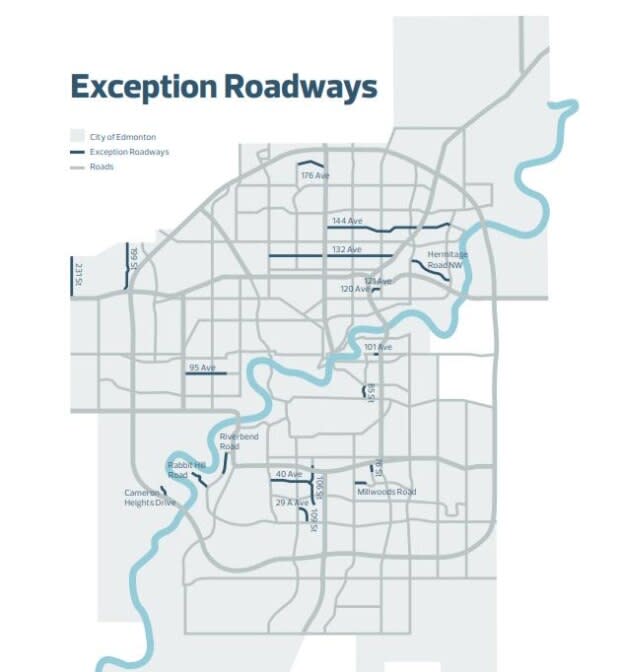Tale of two residential speed limits: A look at the proposals headed before councillors
The City of Edmonton introduced two detailed speed-limit proposals on Thursday, after months of analysis.
Council has long debated lowering residential speed limits, but councillors have been divided about the best approach.
Jessica Lamarre, the city's acting director of traffic safety, said council specifically asked administration to consider the two proposals, but said the city was aware of other ideas to reduce speed limits.
"Should council wish to discuss other ideas, we're happy to do that," she said.
The city defines residential roads as those that provide direct access to adjacent lots and are used to travel in a given neighbourhood.
Collector roads often connect neighbourhoods to arterial roads, which often cross through and connect several neighbourhoods.
With councillors set to debate the two proposals on Feb. 26, CBC News broke down the differences between the two ideas.
What are the two proposals?
Core-zone proposal
This proposal encompasses the neighbourhoods between 111th Avenue and 61st Avenue and 142nd Street and 75th Street. All the speed limits on local, residential roads within those boundaries would be dropped to 30 km/h.

Arterial and collector roads would stay at their current speed limits, while high-pedestrian locations such as Jasper Avenue and Whyte Avenue could be dropped to 40 km/h as part of the proposal.
The proposal is projected to cost the city $1.4 million, according to figures released Thursday. The city would need 1,300 new signs and council would have to approve changes to the speed bylaw.
The city estimates it would take six months to install the signs and roll out a public education campaign.
City-wide default
This proposal applies to all 400 neighbourhoods in the city. Every residential road would have a 40 km/h speed limit.
Again, most arterial and collector roads would maintain their current speed limits.

Since the changes would apply to the entire city, it would be expected to cost more money — $2.5 million in total. The city would need 5,500 new signs.
The approval process would take longer, since the city would have to amend the charter bylaw, and any amendments would have to go before a public hearing. If the bylaws were approved, the city estimates it would take 11 months to roll out the program.
The city could decide to mix both proposals, maintaining 30km/h in core neighbourhoods and 40km/h in more suburban areas.
But at a news conference Thursday, Lamarre noted such a mix would pose continuity problems between core and suburban residential speed limits.
It would also require more signs and cost more, she said.
Are some areas excluded from the proposals?
The city did not consider changes to playground and school zone speed limits in either proposal, Lamarre said.
"Those were put in place because they protect some of our most vulnerable citizens," she said. "We want to extend that safety to everyone, and so considering where we can reduce speed limits outside of playground zones is an important priority."
The city said no changes are suggested for commercial and industrial roads under both proposals.
There are roads that would exempt from the proposals.
The city expects either proposal would reduce collisions and injuries. But on Thursday the city did not clarify how it reached that conclusion.
The two proposals will go before a public hearing at the community and public services committee on Feb. 26.

